1. Jellyfish on the march
This impressive bloom of blue blubber jellyfish showed up a few weeks ago beached at Deception Bay, just north of Brisbane:
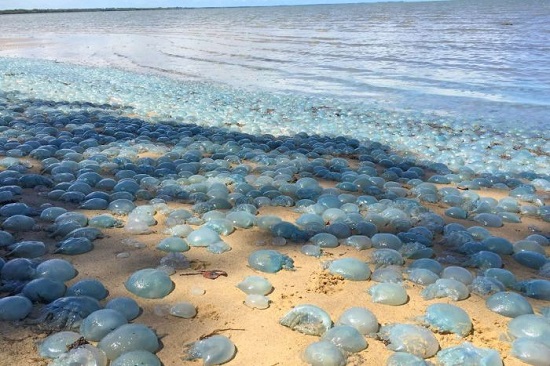
Marine biologist Dr Lisa-Ann Gershwin, who specialises in jellyfish, said the bloom was the biggest she had seen in her 25 years of research. “Just gobsmacking”, she said. But they are native to the area, and as such not a concern.
However, the deadly irukanji has been seen and felt in Moreton Bay, and is not so easily seen:
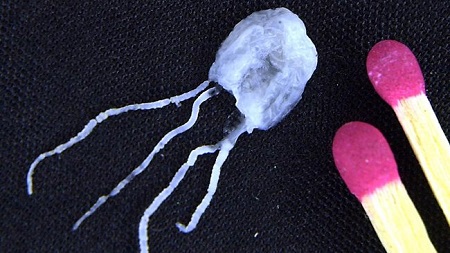
Here’s some advisory information. With global warming they are expected on the Gold Coast in 30 to 40 years. You might recall this post back in 2013 when Dr Lisa-Ann Gershwin’s book Stung! On Jellyfish Blooms and the Future of the Ocean forecast:
- It seems that jellyfish are taking over the oceans. We are past a tipping point on the way to a really yucky ocean with a vastly depleted range of fish species.
2. China’s first vertical forest
- Stefano Boeri Architetti is bringing the vertical forest concept popularized in Milan to Nanjing, China with the Nanjing Towers. The two green towers could provide the city with a breath of fresh air, producing around 132 pounds of oxygen every day as they absorb carbon dioxide. They’ll accomplish this air-cleaning feat with 1,100 flourishing trees from 23 local species and 2,500 cascading shrubs and plants.
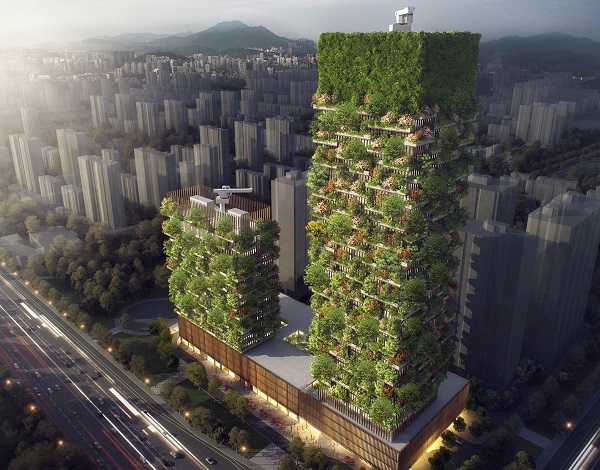
That’s just an image, the real thing won’t be there until 2018.
Back in May 2013, Climate clippings 74, Item 5 showed Stefano Boeri’s work in Milan:

3. Plastic sidewalk harvests energy from the sun
Hungarian startup Platio has designed a paving system made with recycled plastic, offering firm ground while harvesting clean energy from the sun:
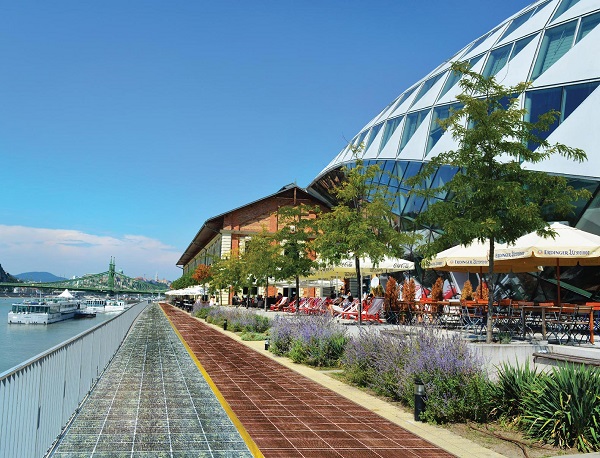
4. Select Committee into the Resilience of Electricity Infrastructure in a Warming World
Our Senate has set up a Select Committee into the Resilience of Electricity Infrastructure in a Warming World. Sorry, I just can’t do it justice, but look forward to the report, due by 27 March.
I flicked through the ANU Energy Change Institute’s submission. They seem to have a good grasp of network large/scale systems as well as distributed systems. They do a ‘what if’ scenario on the SA September blackout.
Here’s what’s been installed globally in the past two years:
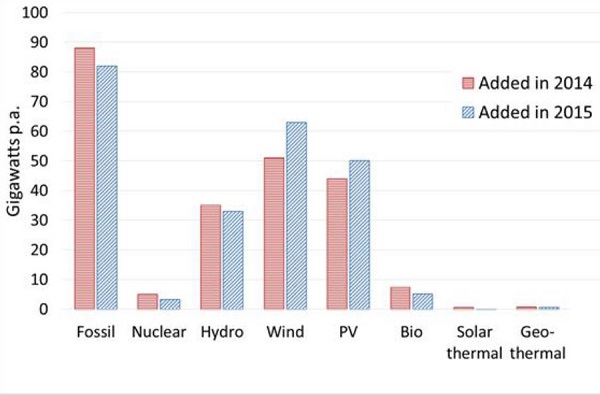
Still a lot of fossil fuels.
5. Shell invests in “green gas” plants
Talk of Shell investing in “green gas plants”, says Giles Parkinson:
- ranks up there with “clean coal” as fossil fuel propaganda, but it is exactly the way that the Murdoch media chose to describe Shell’s promise to combine solar and gas in Oman, Brunei and Australia, trumpeting the headline “Shell to invest in green gas plants” to lead its business section.
Some oil companies are heading towards renewables, but for some it is more a fashion accessory.
- in its reporting of the press conference late last week, Shell intends to invest less than $1 billion a year in renewables across the globe – just a fraction of its annual capital expenditure of nearly $US30 billion.
That includes wind.
It’s a start, but don’t expect anything dramatic in Oz.
6. The Dutch knew how to harvest the wind
In 2008, near the end of our family trip down the Rhine, one of the optional tours from Amsterdam was to Volendam-Zuidersee. My wife and I chose to go to the Rijksmuseum instead, so I wasn’t there. However, there are three and a quarter of my relatives shown in this image:
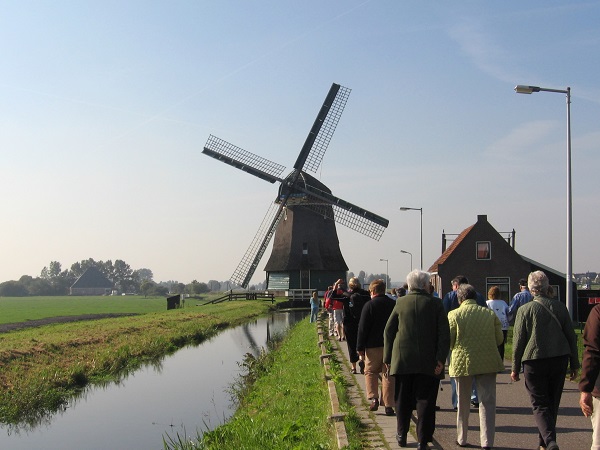
I’m told this was a working windmill, and its main function was to pump saltwater seepage back into the sea. A technology that could be really useful as the waters rise!
It looked very attractive dairy-farming country, but my elder brother always wants to get to the bottom of what he sees, and he was eventually informed that to Dutch dairy farmers the grass in Victoria looks greener.


Hope no-one is permitted to walk under those vertical forests.
No coconut palms one would think but even a medium sized twig would do serious injury from 20 or so floors.
Even with just a 25 knot breeze the fall zone could be 100 meters or more en every direction.
DJ would have a better idea on risk.
Jumpy: I suspect the falling branch issue could be solved by selecting the right species and maintenance.
I have seen things in the past that suggest vertical gardens could be a fire hazard if not done properly.
Great Windmill shot Brian.
For something completely different, yet quite consistent, here is one of the very best of the Delos yacht videos for anyone who has wondered what open ocean yacht cruising is really like
https://youtu.be/jV_mEeYyuQQ
At 6:11 you get a glimpse of where some of the energy that is melting Antarctica is coming from.
Green buildings, by the way, just brilliant. Think how that feels to look out through the greenery to that awesome elevated view. It has got to feel like being in a rain forest canopy. Of course there will be all manner of problems, but those are the problems really worth solving.
The green buildings are hopefully not just a cheap gloss over the fact that the last vestiges of greenery or nature are slowly developed out of town. Then again, SBS personality Indira Naidoo grew 70 kg of tomatoes a year on her balcony. Urban gardening is a sustainable solution, architectural selling points not.
BilB I was lucky enough to stand once in South Africa at the point where the Indian Ocean and the Atlantic meet. Their opposing current and different colour created a distinct line in the water, it looked amazing.
From what I can gather energy distribution in oceans is complicated and we only very recently were able to measure and record temperatures at some depth. It is complicated as currents have their innate variability as well as AGW can and very likely are already has started to affect them. We have a better understanding the effects there of in atmosphere and weather. So for example these so called ‘blocking events’, in essence large stagnant systems in mid latitude blocked by stationary strong jet streams. One of the first one was when Russia was cooking for weeks with unprecedented wild fires and and Pakistan got rained out with unprecedented floods. In Northern America these events have become infamous for the hot and dry of the west coast with trend moving north, same time as the east coast gets regularly frozen out or snowed in with a trend of moving south. No surprise if we are start to seed similar effects in the south. Granted the Antarctic has different climatic patterns and forces to Arctic, but you’d expect a similar slowing down of jet streams. Take the situation of the recent flooding of southern WA and the prolonged roasting of South Australia, NSW and southern QLD, for example.
Ootz, the jet stream is more wavy and tends to get stuck:
That’s from Climate clippings 132.
I’m working on a new post about some of this stuff, but soon the biggest driver of changes to the climate as we experience it could be freshwater input from melting ice shelves,
PS, we don’t here anything about the changes in the southern hemisphere jetstream, but it is sure to be happening.
On the vertical forest, jumpy makes a logical point, but the Europeans aren’t stoopid, and I think they would be careful about species selection, as John D suggests.
I’ve been around trees for the last 25 years. There are four palm trees at one place I always approach with care. They have a frond with a heavy end, perhaps 10-15kg, and if that hit from 40 feet I think you could be dead.
My wife had a beautiful Sydney blue gum in pride of place in her preschool playground. One morning there was a thick dry limb on the ground that could have killed a kid or three. Of course the tree had to come out, which happened fairly smartly.
Looking at the pictures of “vertical forests” on the internet it seems there are very few actual trees involved. Appears to me more like the under storey than the whole forest 🙂
Here’s an image of what Stefano Boeri thinks he’s up to: